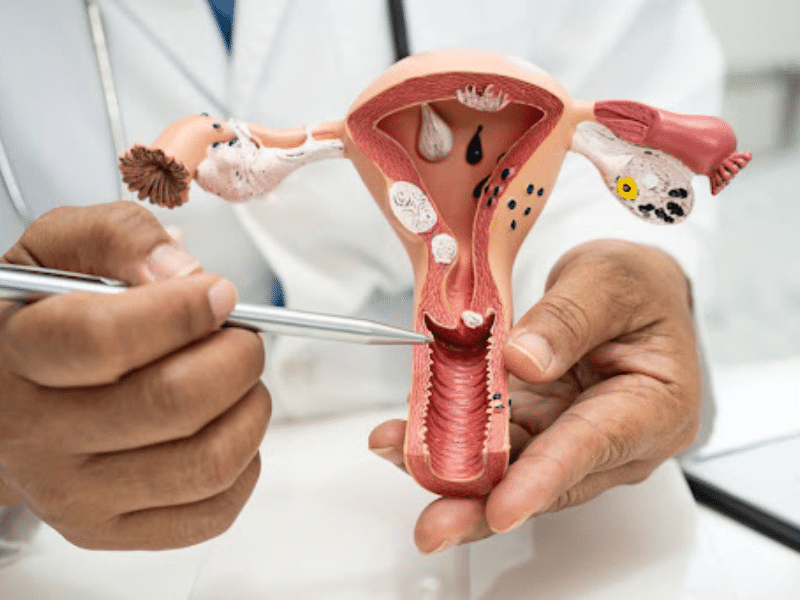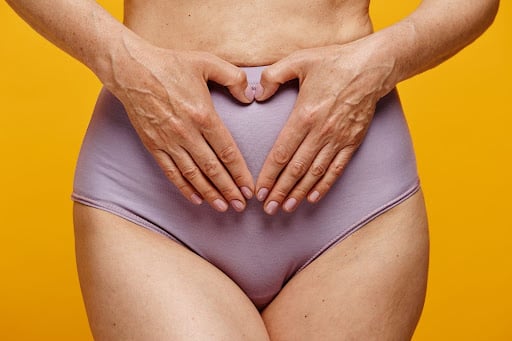
How to Understand White Discharge After Menopause
Menopause is a significant transition in a woman’s life, marking the end of her reproductive years. This phase brings about various physical and emotional changes, one of which is vaginal discharge. While many women associate vaginal discharge with their menstrual cycle, it is essential to understand that menopause and discharge are also closely linked.
In this blog, we will explore the nature of vaginal discharge during and after menopause, its causes, and what it signifies for a woman’s health.
What is Menopause?
Menopause is defined as the point in a woman’s life when she has not had a menstrual period for 12 consecutive months. It typically occurs between 45 and 55, although it can happen earlier or later in some women.
Menopause is a natural biological process that signifies the end of fertility, and it is accompanied by various symptoms such as hot flashes, night sweats, mood swings, and vaginal dryness. Among these symptoms, vaginal discharge is often overlooked, yet it plays a crucial role in a woman’s vaginal health.
Understanding Vaginal Discharge
Vaginal discharge is a natural part of a woman’s reproductive system. It is produced by glands inside the vagina and cervix and serves multiple purposes, including keeping the vagina clean, preventing infections, and maintaining the right pH balance.
The nature of vaginal discharge varies throughout a woman’s menstrual cycle, influenced by hormonal changes. However, the relationship between menopause and discharge is different, as hormonal fluctuations take on a new dimension.
White Discharge During Menopause
White discharge during menopause can be a common experience for many women. Unlike the discharge experienced during the reproductive years, this discharge is often less abundant and has a different consistency. As estrogen levels decline during menopause, the vaginal walls become thinner and less lubricated, which can lead to changes like vaginal discharge.
White discharge during menopause can vary from thin and watery to thick and sticky. In most cases, this discharge is normal and is the body’s way of keeping the vagina healthy. However, it is essential to monitor any changes in the discharge’s color, odor, or consistency, as these could indicate an underlying issue.
Causes of White Discharge After Menopause
Experiencing white discharge after menopause is not uncommon, but it is important to understand the potential causes to determine whether it is a normal occurrence or a sign of a health concern.
Here are some possible causes of white discharge after menopause:
1. Vaginal Atrophy
Also known as atrophic vaginitis, this condition occurs when the vaginal walls thin and dry out due to decreased estrogen levels. This can lead to irritation, itching, and an increase in white discharge menopause. Vaginal atrophy is a common condition in postmenopausal women and can be managed with moisturizers, lubricants, or estrogen therapy.

2. Infections
Even after menopause, women can still be susceptible to vaginal infections, such as bacterial vaginosis or yeast infections. These infections can cause changes in vaginal discharge, including an increase in white discharge after menopause. Bacterial vaginosis, for example, may cause a thin, milky-white discharge with a fishy odor, while a yeast infection may result in a thick, white, cottage cheese-like discharge.
3. Hormonal Imbalance
Although estrogen levels significantly decrease during menopause, fluctuations in other hormones can still occur. These hormonal changes can affect the vaginal environment, leading to an increase in white discharge during menopause.
4. Sexually Transmitted Infections (STIs)
While the risk of STIs may decrease after menopause due to a reduced likelihood of sexual activity, it is still possible to contract an STI. Some STIs can cause changes in vaginal discharge, so it is essential to practice safe sex and consult a healthcare provider if you notice any unusual symptoms.
5. Endometrial Hyperplasia
This condition involves the thickening of the uterine lining and can occur in postmenopausal women. While endometrial hyperplasia often presents with abnormal uterine bleeding, it can also cause an increase in white discharge after menopause.
When to Seek Medical Advice
While menopause discharge is often normal, it is crucial to be aware of any changes that could indicate a health problem. Here are some signs that warrant a visit to your healthcare provider:
1. Unusual Color or Consistency
If the discharge is yellow, green, gray, or has a frothy texture, it may indicate an infection or other medical condition.
2. Foul Odor
A strong, unpleasant odor is often a sign of an infection, such as bacterial vaginosis or an STI.
3. Itching or Burning
These symptoms, along with white discharge during menopause, could suggest a yeast infection or vaginal atrophy.
4. Bleeding
Postmenopausal bleeding, even if accompanied by white discharge menopause, should always be evaluated by a healthcare provider, as it could be a sign of a more serious condition such as endometrial cancer.

Managing Menopause and Discharge
For many women, the changes in vaginal discharge during and after menopause can be managed with simple lifestyle adjustments and over-the-counter products. Here are some tips for maintaining vaginal health during menopause:
- Stay Hydrated: Drinking plenty of water helps keep your body hydrated and can improve vaginal lubrication, reducing the likelihood of irritation and abnormal discharge.
- Use Vaginal Moisturizers: Over-the-counter vaginal moisturizers can help alleviate dryness and maintain the health of vaginal tissues, especially if you are experiencing white discharge during menopause due to vaginal atrophy.
- Practice Good Hygiene: Maintaining good genital hygiene is crucial during menopause. Use gentle, unscented soaps to clean the vaginal area, and avoid douching, which can disrupt the natural balance of bacteria in the vagina.
- Wear Breathable Underwear: Choose cotton underwear that allows air to circulate and keeps the vaginal area dry. Avoid tight-fitting clothing that can trap moisture and contribute to infections.
- Consider Hormone Therapy: For women experiencing significant discomfort from vaginal dryness or atrophy, hormone therapy may be an option. Estrogen therapy can help restore the health of vaginal tissues and reduce white discharge during menopause. However, it is important to discuss the risks and benefits of hormone therapy with your healthcare provider.
- Regular Check-Ups: Even after menopause, it is essential to continue with regular gynecological check-ups. Your healthcare provider can monitor your vaginal health, address any concerns about menopause discharge, and recommend appropriate treatments if necessary.
Conclusion
Menopause and discharge are closely connected, and understanding the changes in vaginal discharge during and after menopause is crucial for maintaining your vaginal health. While white discharge during menopause is often normal, it is important to be vigilant about any changes that could indicate an underlying health issue. By staying informed and taking proactive steps to care for your vaginal health, you can navigate the changes of menopause with confidence.
Every woman’s experience with menopause is unique, and what is normal for one person may not be for another. If you have concerns about white discharge after menopause or any other symptoms, do not hesitate to consult your healthcare provider. They can provide personalized advice and treatment options to help you manage the changes associated with menopause and maintain your overall well-being.
If you’re experiencing changes in vaginal discharge during or after menopause and want personalized advice, download the Miror App today. Connect with expert gynecologists who specialize in menopause care and receive tailored treatments to help you navigate this important phase of life with confidence and comfort. Take charge of your health—Download the Miror App now and start your journey to well-being!
Citations
FAQs
Experiencing cramps and white discharge but no period can be due to various reasons, such as ovulation, hormonal imbalances, stress, or early pregnancy. If you’re concerned, consider taking a pregnancy test or consulting a healthcare provider.
A missed period and cramping in lower abdomen and white discharge could indicate pregnancy, hormonal changes, or conditions like polycystic ovary syndrome (PCOS). It’s best to take a pregnancy test and consult a doctor for further evaluation.
White discharge and cramps before a period are often normal due to hormonal changes. However, if the discharge has an unusual odor, color, or consistency, or if the cramps are severe, it could indicate an infection or other issue.
White discharge with cramps before a period is typically caused by hormonal fluctuations as your body prepares for menstruation. However, if symptoms are severe or unusual, it could be a sign of an underlying condition like a yeast infection or pelvic inflammatory disease (PID).
Yes, cramps no period and white discharge can occur together due to ovulation, stress, hormonal imbalances, or early pregnancy. If symptoms persist or worsen, consult a healthcare provider.

Sruthakeerthi Shenoy





